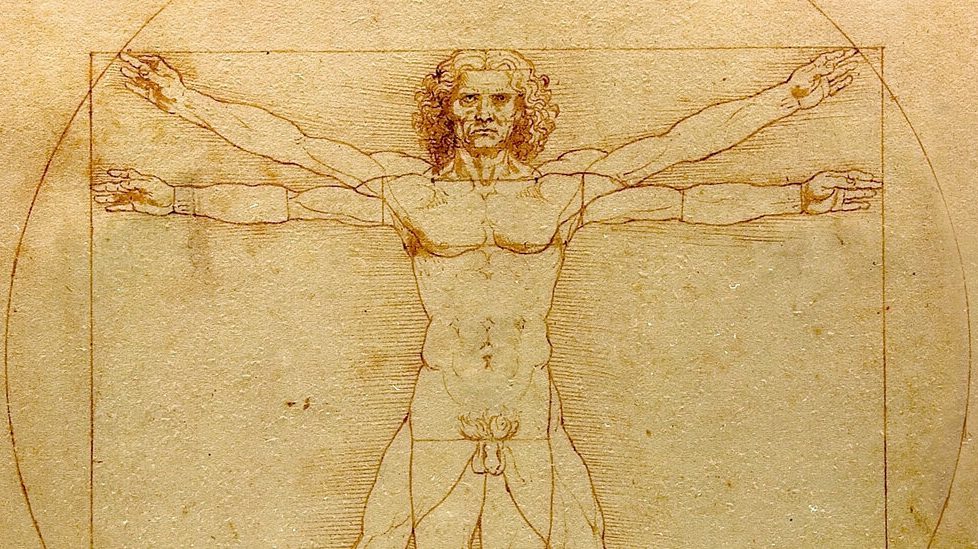Da Vinci’s Been Dead for 500 Years. Who Gets to Profit from His Work?


In the late 15th century, when the Italian Renaissance artist Leonardo da Vinci completed “Vitruvian Man” — one of his most famous drawings, which depicts the proportions of the human body — he could not have predicted it would be reproduced onto cheap notebooks, coffee mugs, T-shirts, aprons, and even puzzles.
Centuries later, the Italian government and the German puzzle maker Ravensburger are battling over who has the right to reproduce “Vitruvian Man” and profit from it.
At the center of the dispute is Italy’s cultural heritage and landscape code, which was adopted in 2004 and allows cultural institutions, like museums, to request concession fees and payments for the commercial reproduction of cultural properties, like “Vitruvian Man.”
That code is at odds with European Union law, which states that works in the public domain (like “Vitruvian Man”) are not subject to copyright.
For more than a decade, Ravensburger sold a 1,000-piece puzzle with the image of the famed drawing. But in 2019, the Italian government and the Gallerie dell’Accademia in Venice, where the famous work and other da Vinci pieces are on display, used the Italian code to demand Ravensburger stop selling the puzzle and pay a licensing fee.
Ravensburger refused, and later argued that the Italian code did not apply outside of Italy.
In 2022, a Venice court ordered the company to pay a penalty of 1,500 euros (or about $1,630) to the government and the Gallerie dell’Accademia for each day it delays payment.
But last month, the legal battle took a turn when a court in Germany sided with Ravensburger, ruling that the company does not have to pay up and that Italy’s cultural heritage code did not apply outside its border. The court said the Italian code broke with European law that standardizes copyright protections for 70 years after the death of the artist. (Da Vinci has been dead for 505 years.)
“The Italian state does not have the regulatory power to apply it outside Italian territory,” the German court ruled. “The opposite view violates the sovereignty of the individual states and must therefore be rejected.”
But Italy has continued to push back. A spokesman for the Italian government told an Italian news outlet last week that the German ruling was “abnormal” and that the government would challenge it before “every national, international and community court.”
Italy’s Ministry of Culture did not respond to multiple requests for comment.
Heinrich Huentelmann, a spokesman for Ravensburger, said in a statement on Tuesday that the company remained in contact with the involved parties and was endeavoring to resolve the conflict.
Ravensburger stopped selling the puzzle worldwide amid the legal battle, Mr. Huentelmann said, but a quick Google search revealed similar puzzles made by other companies are still available online.
Eleonora Rosati, an Italian-qualified lawyer and professor of intellectual property law at Stockholm University, said Italian officials were attempting to simultaneously safeguard the country’s cultural heritage and monetize it.
Companies both inside and outside of Italy that use Italian culture heritage pieces on products may want to operate with caution, Ms. Rosati said. She noted that in 2014 Italian officials famously went after an Illinois-based gun maker for using an image of Michelangelo’s statue of David to promote a rifle.
Italian officials again screamed foul in 2022 when the Uffizi Gallery in Florence sued Jean Paul Gaultier for reproducing the image of a Botticelli painting on clothing. And last year, a court in Florence ruled against GQ Italia for using an image of the David statue on the cover of one of its magazines in 2020 without permission.
“I don’t think that this German decision is the final word that has been spelled on this matter, and indeed all those using the images of Italian cultural heritage may want to assess the risk they are facing in doing that,” Ms. Rosati said. “Right now, the situation has become quite heated.”
But Italy’s fervent approach to protecting culturally important works could backfire, according to Geraldine Johnson, a professor of art history at the University of Oxford.
“The result might be that legitimate companies that could be producing high-quality goods depicting iconic Italian works of art will turn instead to non-Italian objects,” Ms. Johnson said, noting that such a shift might reduce that influence of Italian culture globally while illegal counterfeit goods continue to be made cheaply with images deemed unlawful by the Italian courts.
“That would not seem to be in the best interests of increasing Italy’s global status and relevance through the ‘soft’ power of iconic visual imagery,” she said.
The post Da Vinci’s Been Dead for 500 Years. Who Gets to Profit from His Work? appeared first on New York Times.
